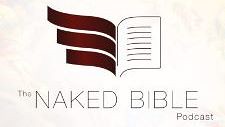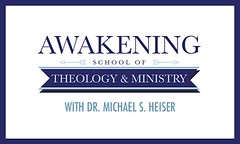 In the study of the Divine Council—the pantheon of divine beings or angels who currently administer the affairs of heaven and earth—experts typically agree that, beginning at the Tower of Babel, the world and its inhabitants were disinherited by the sovereign God of Israel and placed under the authority of lesser divine beings that became corrupt and disloyal to God in their administration of those nations (Psalm 82). According to the theory, these beings quickly became worshipped on earth as gods following Babel, and because these angels, unlike their human admirers, would continue on earth until the end of time, each ‘spirit’ behind the pagan attributions was known at miscellaneous times in history and to various cultures by different names. This certainly agrees with the biblical definition of idolatry as the worship of fallen angels, and means the characterization of such spirits as “Jupiter,” “Justice,” “Osiris,” and “Isis,” can be correctly understood to be titles ascribed to distinct and individual supernaturalism. The spirit behind Apollo was thus a real personality; Osiris actually lived, and still does. Yet Osiris could have been the same entity known elsewhere as Apollo or Dionysus. Numerous Greek historians, including Plutarch, Herodotus, and Diodorus Siculus, observed Osiris of the Egyptians and Dionysus of the Greeks as the same god, while others found Apollo and Dionysus to be one and the same. Since the designers of the Great Seal of the United States incorporated the appropriate Egyptian symbols and Roman-Greek mottoes into the seal’s scheme to cipher a prophecy about the return of this god—Apollo-Osiris (aka, Nimrod)—it seems reasonable that the occultists also perceived the two gods as representing a singular unseen agency.
In the study of the Divine Council—the pantheon of divine beings or angels who currently administer the affairs of heaven and earth—experts typically agree that, beginning at the Tower of Babel, the world and its inhabitants were disinherited by the sovereign God of Israel and placed under the authority of lesser divine beings that became corrupt and disloyal to God in their administration of those nations (Psalm 82). According to the theory, these beings quickly became worshipped on earth as gods following Babel, and because these angels, unlike their human admirers, would continue on earth until the end of time, each ‘spirit’ behind the pagan attributions was known at miscellaneous times in history and to various cultures by different names. This certainly agrees with the biblical definition of idolatry as the worship of fallen angels, and means the characterization of such spirits as “Jupiter,” “Justice,” “Osiris,” and “Isis,” can be correctly understood to be titles ascribed to distinct and individual supernaturalism. The spirit behind Apollo was thus a real personality; Osiris actually lived, and still does. Yet Osiris could have been the same entity known elsewhere as Apollo or Dionysus. Numerous Greek historians, including Plutarch, Herodotus, and Diodorus Siculus, observed Osiris of the Egyptians and Dionysus of the Greeks as the same god, while others found Apollo and Dionysus to be one and the same. Since the designers of the Great Seal of the United States incorporated the appropriate Egyptian symbols and Roman-Greek mottoes into the seal’s scheme to cipher a prophecy about the return of this god—Apollo-Osiris (aka, Nimrod)—it seems reasonable that the occultists also perceived the two gods as representing a singular unseen agency.
Sunday, July 19, 2009
PART FIFTEEN: Read It Before It Is Banned By The US Government
Posted by
Steve McHenry
at
11:24 AM
![]()
Labels: Apollo, Dan Brown, Freemasonry, Great Seal, Michael Heiser, New World Order, Nimrod, Osiris, Secret Destiny of America, The Lost Symbol, The Solomon Key
Subscribe to:
Post Comments (Atom)









No comments:
Post a Comment